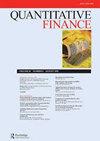Pricing tenure payment reverse mortgages with optimal exercised prepayment options by accounting for house prices, interest rates, and mortality risk
IF 1.4
4区 经济学
Q3 BUSINESS, FINANCE
引用次数: 0
Abstract
Prepayment options can be exercised to terminate reverse mortgages (RM hereafter) early and receive house prices, minus loan balances, at the expense of future annuity proceeds. Prior RM evaluation studies use probability or intensity models to calibrate option exercise policies with historical prepayment records and may not apply to countries without sufficient historical records. In addition, these models may fail to capture time-varying policies due to changing market conditions. Accordingly, insurers may run the risk of undervaluing option premiums and overestimating fair annuity rates. To find optimal exercise policies that maximize option premiums and establish the most conservative annuity rates, we propose a three-dimensional tree for modeling stochastic house prices, interest rates, and mortality risks. We analyze the gain and loss to exercise the option in each scenario to determine the optimal policy. Fair annuity rates are evaluated to ensure that expected insurer losses (i.e. loan balances exceeding house values) equal gains (i.e. insurance premiums plus house values exceeding loan balances). We find that such non-optimal exercise policies undervalue option premiums and overestimate fair annuity rates. Increasing upfront premiums, insurance premium rates, and early redemption charges reduce prepayment incentives and increase fair annuity rates. We also analyze influences from factors such as the policyholder's age and volatilities of house prices and interest rates.通过考虑房价、利率和死亡风险,对具有最优行使提前付款选项的终身付款反向抵押贷款进行定价
提前支付期权可以提前终止反向抵押贷款(以下简称RM),并以牺牲未来年金收益为代价获得房价减去贷款余额。先前的风险管理评估研究使用概率或强度模型来校准具有历史提前支付记录的期权行权政策,并且可能不适用于没有足够历史记录的国家。此外,由于市场条件的变化,这些模型可能无法捕捉时变政策。因此,保险公司可能会有低估期权溢价和高估公平年金利率的风险。为了找到期权溢价最大化的最优执行策略,并建立最保守的年金利率,我们提出了一个三维树来建模随机房价、利率和死亡率风险。我们分析了收益和损失,在每种情况下行使期权,以确定最优策略。评估公平年金利率,以确保预期的保险公司损失(即贷款余额超过房屋价值)等于收益(即保险费加上房屋价值超过贷款余额)。我们发现这种非最优行权政策低估了期权溢价,高估了公平年金率。增加预付保险费、保险费费率和提前赎回费用,减少了提前付款的激励,提高了公平的年金费率。我们还分析了投保人年龄、房价和利率波动等因素的影响。
本文章由计算机程序翻译,如有差异,请以英文原文为准。
求助全文
约1分钟内获得全文
求助全文
来源期刊

Quantitative Finance
社会科学-数学跨学科应用
CiteScore
3.20
自引率
7.70%
发文量
102
审稿时长
4-8 weeks
期刊介绍:
The frontiers of finance are shifting rapidly, driven in part by the increasing use of quantitative methods in the field. Quantitative Finance welcomes original research articles that reflect the dynamism of this area. The journal provides an interdisciplinary forum for presenting both theoretical and empirical approaches and offers rapid publication of original new work with high standards of quality. The readership is broad, embracing researchers and practitioners across a range of specialisms and within a variety of organizations. All articles should aim to be of interest to this broad readership.
 求助内容:
求助内容: 应助结果提醒方式:
应助结果提醒方式:


